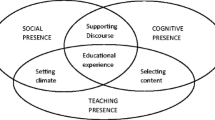Abstract
In the article it was important to consider two basic moments i.e., impact mode of using virtual environment at training process within one faculty of the University, directly at training quality and what outcomes can be reached therewith. The work significance consists of studying the virtual environment effect instead of traditional educational outlook and on-lining training in pedagogical sphere. We consider virtual (digital) educational resources, their potential adaptation to trainee’s personality and realization during academic process at the university. Virtual training at the university is a total of virtual educational resource. Information and educational interaction exists in the process of subjects and objects interrelation. An integration of information and pedagogical technologies takes place in the process of subjects and objects interrelation. Herein the training is connected with such human activity spheres as intellectual, cultural, emotional, social.




Similar content being viewed by others
References
Baggetun, R., & Mjelstad, S. (2006). eLogg: Facilitating ownership and openness in virtual learning environments. Education and Information Technologies, 11, 357–369.
Berns, A., Gonzalez-Pardo, A., & Camacho, D. (2013). Game-like language learning in 3-D virtual environments. Computers & Education, 60, 210–220.
Blinnel, E., & Haase, T. (2010). Virtual reality platforms for education and training in industry. Advances in databases and information systems (pp. 1–7).
Bouta, H., & Retalis, S. (2013). Enhancing primary school children collaborative learning experiences in maths via a 3D virtual environment. Education and Information Technologies, 18(4), 571–596.
Burnett, C. (2011). Medium for empowerment or a ‘centre for everything’: Students’ experience of control in virtual learning environments within a university context. Education and Information Technologies, 16(3), 245–258.
Consorti, F., et al. (2012). Efficacy of virtual patients in medical education: A meta-analysis of randomized studies. Computers & Education, 59, 1001–1008.
Jara, C. A., et al. (2011). Hands-on experiences of undergraduate students in Automatics and Robotics using a virtual and remote laboratory. Computers & Education, 57, 2451–2461.
Kalogiannakis, M. (2004). A virtual learning environment for the French physics teachers. Education and Information Technologies, 9(4), 345–353.
Kaufmann, H., Schmalstieg, D., & Wagner, M. (2000). Construct3D: a virtual reality application for mathematics and geometry education. Education and Information Technologies, 5, 263–276.
Kerimbayev, N. (2012). Professional use of information communication technology as a component of the methodical system of training of future teachers. Siberian Pedagogical Journal, 5, 65–68.
Kerimbayev, N., & Akramova, A. (2013). Virtual learning as a component of the electronic educational environment of the university. Distance learning: A view from the present to the future. Collection of articles (pp. 56–60).
Kerimbayev, N., et al. (2014). E-learning for ungraded schools of Kazakhstan: Experience, implementation, and innovation. Education and Information Technologies, 19, 307–326.
Liu, X. (2012). Continuous education and training based on virtual learning communities (pp. 733–736).
Lyashenko, M. S., & Frolova, N. H. (2014). LMS projects: A platform for intergenerational e-learning collaboration. Education and Information Technologies (pp. 495–513).
Nagy, J. T. (2014). Using learning management systems in business and economics studies in Hungarian higher education. Education and Information Technologies (pp. 1–21).
Rosa, M., & Lerman, S. (2011). Researching online mathematics education: Opening a space for virtual learner identities. Education Studies in Mathematics., 78(1), 69–90.
Stacey, E., & Gerbic, P. (2007). Teaching for blended learning-Research perspectives from on-campus and distance students. Education and Information Technologies.
Author information
Authors and Affiliations
Corresponding author
Additional information
Highlights
• virtual learning environment of the institution is a multi-functional system;
• interaction of the subject and object of educational process through electronic communications;
• digital educational resources appear as information objects of the educational process;
• possible using of the virtual environment for distance and inclusive education;
• virtual education provides a space for an “open” virtual university of personality;
• changing of the traditional pedagogical views and forms in the organization of on-line training;
• results can be used for the development of virtual learning environment in higher education institution.
Rights and permissions
About this article
Cite this article
Kerimbayev, N. Virtual learning: Possibilities and realization. Educ Inf Technol 21, 1521–1533 (2016). https://doi.org/10.1007/s10639-015-9397-1
Published:
Issue Date:
DOI: https://doi.org/10.1007/s10639-015-9397-1




